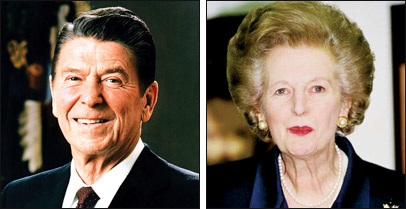Global financial crisis and International Monetary Fund - Part I
Crisis began in US and spread throughout Europe and
Asia:
Jayatilleke DE SILVA
The global financial crisis began with the sub-prime mortgage crash
in the United States (US). The crash was precipitated by the large
number of foreclosures from March to September 2007. These foreclosures
were a result of unprecedented high risks taken by fund managers and
investment bankers in the wake of long-term high investment growth and
low financial market volatility. New credit instruments were innovated.
These include hedge funds, derivatives etc.
|

Trading at a stock market. Pic. courtesy: Google |
The development of information communication technology enabled the
electronic transfer of colossal sums of money across the globe at the
push of a button. Speculative capital increased several fold. The
relation between real material capital and fictitious capital became
more and more distant that the latter almost assumed the form of an
independent existence.
The underlying relation between the two comes in bold relief at times
of crisis when there is a run on money and a large part of the
fictitious capital, i.e., bills of exchange, derivatives etc., becomes
unredeemable and vanish into thin air. This is exactly what happened
with the advent of the present global financial crisis.
Way back in 1993, when the financiers were celebrating the demise of
the Union of Soviet Socialist Republics (USSR) and the end of history
(or at least communism) H. Minsky prophetically wrote; “...the main
purpose of those who controlled corporations was no longer making
profits from production and trade but rather to assure that the
liabilities of the corporations were fully priced in the financial
market....The question of whether a financial structure that commits a
large part of the cash flows to debt validation leads to a debacle such
as that took place between 1929 and 1933 is now an open question...In
the present stage of development the financiers are not acting as ephors
of the economy, editing the financing that takes place so that the
capital development of the economy is promoted. Today’s managers of
money are but little concerned with the development of the capital asset
of an economy....Today’s financial structure is more akin to Keynes’
characterization of the financial arrangements of advanced capitalism as
a casino”. (Minsky, 1993)
What Minsky saw empirically one and half decades ago, Marx saw
theoretically over a century and a quarter ago. In Capital Volume III he
said: “In a system of production, where the entire continuity of the
reproduction process rests upon credit, a crisis must obviously occur -
a tremendous rush for means of payment - when credit suddenly ceases and
only cash payments have validity.....And in fact it is only a question
of the convertibility of bills of exchange into money. But the majority
of these bills represent actual sales and purchases, whose extension far
beyond the needs of society is, after all, the basis of the whole
crisis. At the same time, an enormous quantity of these bills of
exchange represents plain swindle, which now reaches the light of the
day and collapses..” (Marx, 1894)
|

Neo-liberalism, first introduced with much fanfare by Margaret
Thatcher and Ronald Reagan. Pic. courtesy: Google |
The daily turn over of financial markets exceeded US $ three
trillion. Financial capital received an unprecedented mobility. Global
cross-border capital flows more than doubled between 2002 and 2007, with
foreign investors holding one in four debt securities and one in five
equities. (Blankenburg and Palma, 2009)
It is in this context that the subprime mortgage crash occurred. Soon
the crisis spread to the entire non-bank financial sector or the shadow
financial sector. Nor could the formal banking sector remain unscathed.
The fall of Lehman Brothers, the bankruptcy of Merrill Lynch etc. became
part of history. The contagion effect resulted in an unprecedented
banking crisis.
The crisis, originating in the US soon spread throughout Europe and
Asia. Finally, all countries, even those less immersed in the globalised
economy were affected by the crisis. The depth of the crisis could be
witnessed from the flowing data. The accumulation of toxic debt is
enormous. US financial institutions have written off US $ one trillion
and are expected to write off another US $ 3 - 5 trillion (Tett, 2009).
According to Alan Greenspan, the aggregate equity loss of financial and
listed corporate sector, non-listed corporate and uncorporated business
concerns and homes would exceed US $ 40 trillion, equivalent to a
two-thirds of the global Gross Domestic Product (GDP) in 2008.
The International Labour Organisation estimates that world-wide
unemployment could rise between 2007 - 2009 by at least 30 million
people and could even rise up to 50 million, if conditions deteriorate.
There is unanimous opinion that the present financial crisis is the
worst since that of the 1930s which followed the Great Depression of
1929.
Its effect is greater since the world is more globalised and world
population has grown much bigger. In fact it is the first such crisis
after the new wave of globalisation set in. It is also the first crisis
in the 21st Century.
The primary cause of the crisis lay in the new financial architecture
caused by the explosive growth of fictitious capital and the
deregulation of financial markets, especially capital account
liberalisation. Major developed countries including the US and the
United Kingdom (UK) resorted to large-scale regulation of the banking
system following the crisis, thus reciprocally proving that deregulation
was a cause of the crisis.
There was much more. The whole ideology behind economic management
was flawed. Former Chairman of the Federal Exchange Alan Greenspan
admitted before a Congressional hearing that the ideology he believed
in, the model he perceived was flawed. This ideology, this model was
none other than neo-liberalism, first introduced with much fanfare by
Margaret Thatcher and Ronald Reagan.
Courtesy: The Economic Review |



